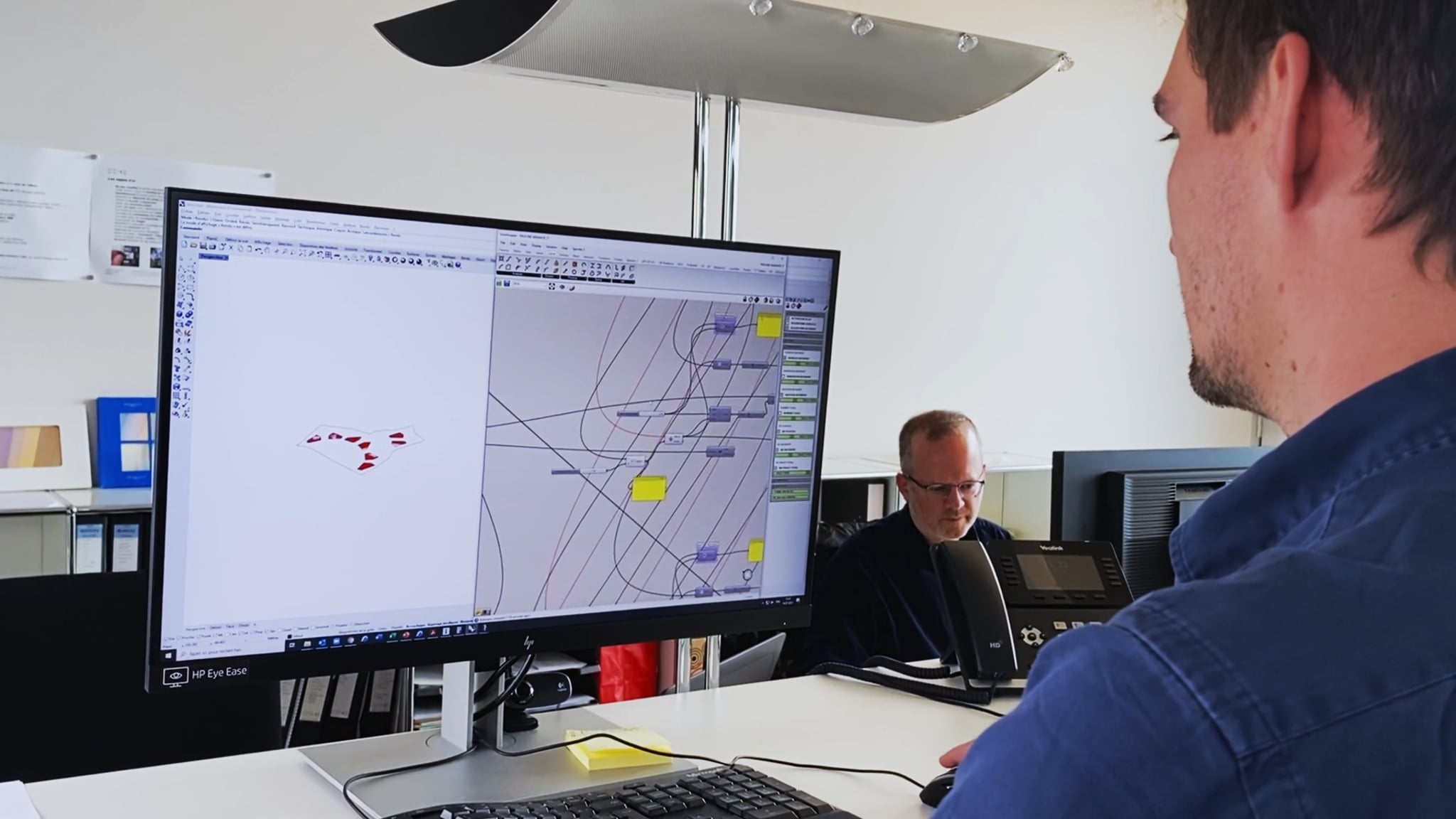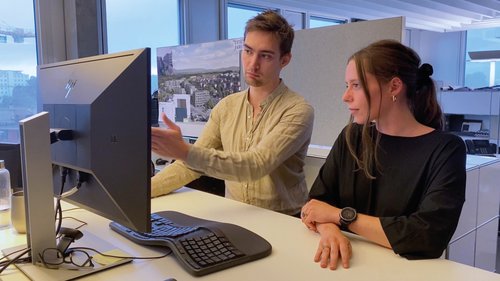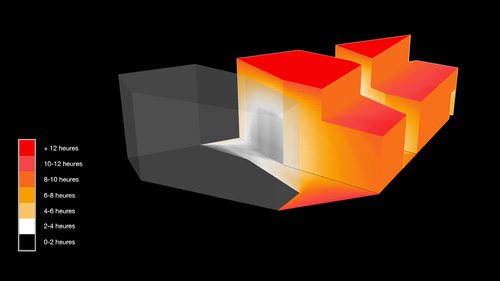
In 2020, CCHE brought together computer graphics artists, designers, BIM specialists and parametric designers in a specialized group called CCHE Digital, which works on the development of digital tools for project design work.
These parametric design tools optimize our work and allow us to free ourselves from the limitations of traditional tools. By building our own algorithms, we have tailor-made tools to explore forms and variants.
The evolution and digitalization of tools has a direct impact on our workflow and collaboration processes. From a traditional method, where each profession brings its expertise in turn on the various issues that concern it, we largely favor a more collaborative method. Each new project is challenged in order to precisely define the scope of action and to bring together the best specialists able to provide decisive expertise to make it evolve. CCHE integrates many complementary professions in its teams, so that each project benefits from a multidisciplinary perspective. This very enriching and stimulating workflow allows the exploration of new horizons and ultimately leads to a better overall coherence of the project.
Malley Phare plans to raise the Malley Lumières center with a 14-story tower. Located within a perimeter labeled Site 2000 Watts, this building is intended to be exemplary from an energy and socio-cultural point of view. Its wooden structure, almost exclusively of local origin, and the deployment of photovoltaic panels on the 4 façades of the building are part of the concrete commitments to achieve this objective.
The collaboration between the team of architects and parametric designers led to the development of an algorithm to determine the best balance between aesthetics and energy performance of the facades. This involved adjusting the spacing and quantity of the 75,000 photocells, while maintaining semi-transparent facades that met the project's constraints.
Parametric design tools allow us to explore with extreme reactivity the ideal shapes in our architecture. In this case, the collaboration between architects and parametric designers focuses on the development of a spiral staircase. From the first sketch, this central staircase becomes a representative element of the building. The limits of traditional tools to draw this type of shape are circumvented through the use of an algorithm to find the ideal shape with the right balance between rhythm and regularity to dress 5 floors with unequal crossing heights. The richness of the internal exchanges within the teams also operates with the companies that accept the challenge of producing this custom-made object.
The layout study is an essential step since it gathers all the studies and reflections carried out to determine the best location for a building according to its perimeter and its specifications. In this case, we have developed an algorithm on which we rely to recover the contours drawn by the architect and generate a volumetry in a real 3D environment as well as the relative quantitative data. This process allows us to integrate all the constraints of the site and the project for the volumetry answering as closely as possible the needs of the client. The best variant is selected on the basis of reliable and precise information. The continuous collaboration between architects and parametric designers also aims at regularly satisfying the parametric tool in order to deploy it on other stages or projects.
Collaboration between parametric designer and architect
Raising the height of a building adds living or usable space. This type of operation is governed by numerous standards and constraints, such as maximum height, neighbouring rights of way, etc. With this in mind, we have developed an algorithm that can be used to design a roof or attic space while complying with all site requirements. This approach enables us to determine whether a roof or attic meets the standards, and the project can then be adjusted in real time to find the optimal solution. In this way, the new volumes created make maximum use of the constructive possibilities authorised by the regulations in force.
Natural daylight is analysed from the outset of the project. In order to make judicious use of this precious resource, we have developed an algorithm for quantifying light according to the location and geometric characteristics of the buildings. Our approach enables us to quantify sunlight and shadows on an exterior and interior project. This simulation tool allows us to optimise the dimensions of the building or to study and optimise the location of solar panels.
Administrative buildings

